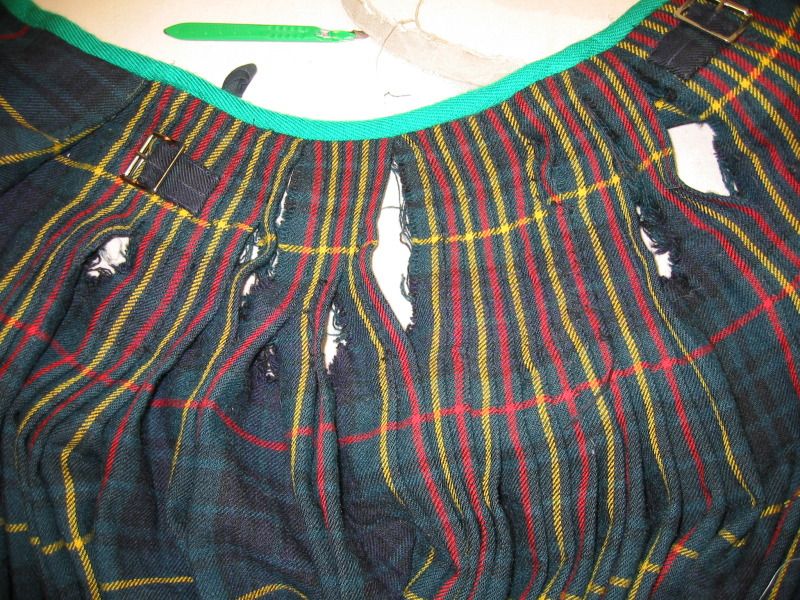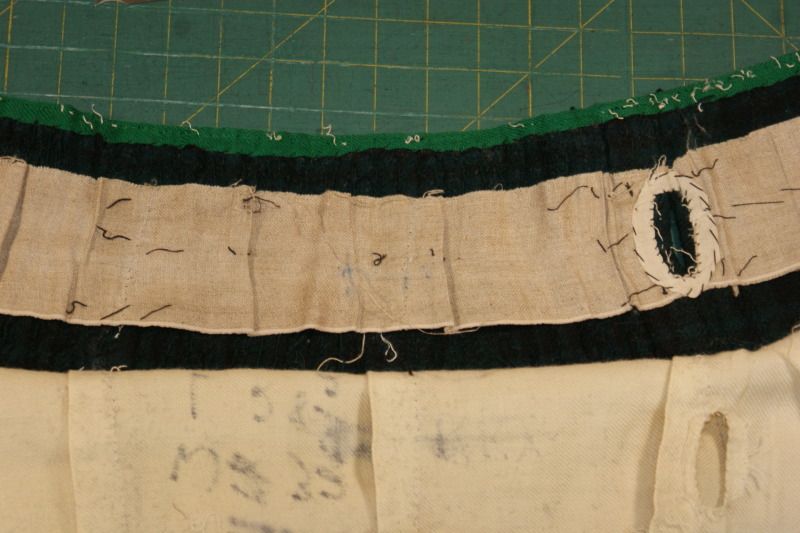You can get straps and buckles from almost any kiltmaker. Or, if you choose, get them from the same place many of us do.
www.highlandxpress.com
But a small word of caution. I would plan a visit to a reputable kiltmaker in the near future. A kilt this old will more than likely suffer from some degradation of the cotton thread and cotton interfacings used all those years ago.
More than likely the stitching that holds the stabilizer and interfacing is gone or about to go. If it is gone you will destroy this kilt after just a few wearings.
If the stitching is still intact but weak it may last a year.
There really is no sure way to tell without removing the lining and taking a look. That is not a hard job and won't hurt anything. But looking will save you the heartache of wearing the kilt and having this happen.
This is a 1958 Gordon and Son's kilt where the stabilizer and interfacing, while worn, were still intact. But the cotton thread holding everything together just got old and failed.
This failure happened very suddenly. Within just a few days. As the old poem says "All at once, and nothing first. Just a bubbles do when they burst."
In this photo of the inside of the same kilt you can see that the black cotton thread has just worn out over time.
I don't want to cause you any alarm. This kilt looks to be in great shape. But at the first sign of what will feel like the kilt getting looser over one wearing, get it to a kiltmaker as soon as you can. The same goes if you notice even one pleat coming undone or any distortion of the outer Tartan fabric.
Like anything 67 years old the materials used were not the modern synthetics we rely on today. A 67 year old car will have much the same issues. You would not take a 1948 Buick out on the freeway and try to do 80 miles an hour without taking it to a reputable antique car mechanic for a check up first. Heck the rubber used for tires in 1948 could not take sustained 80 miles an hour when new.


















Bookmarks